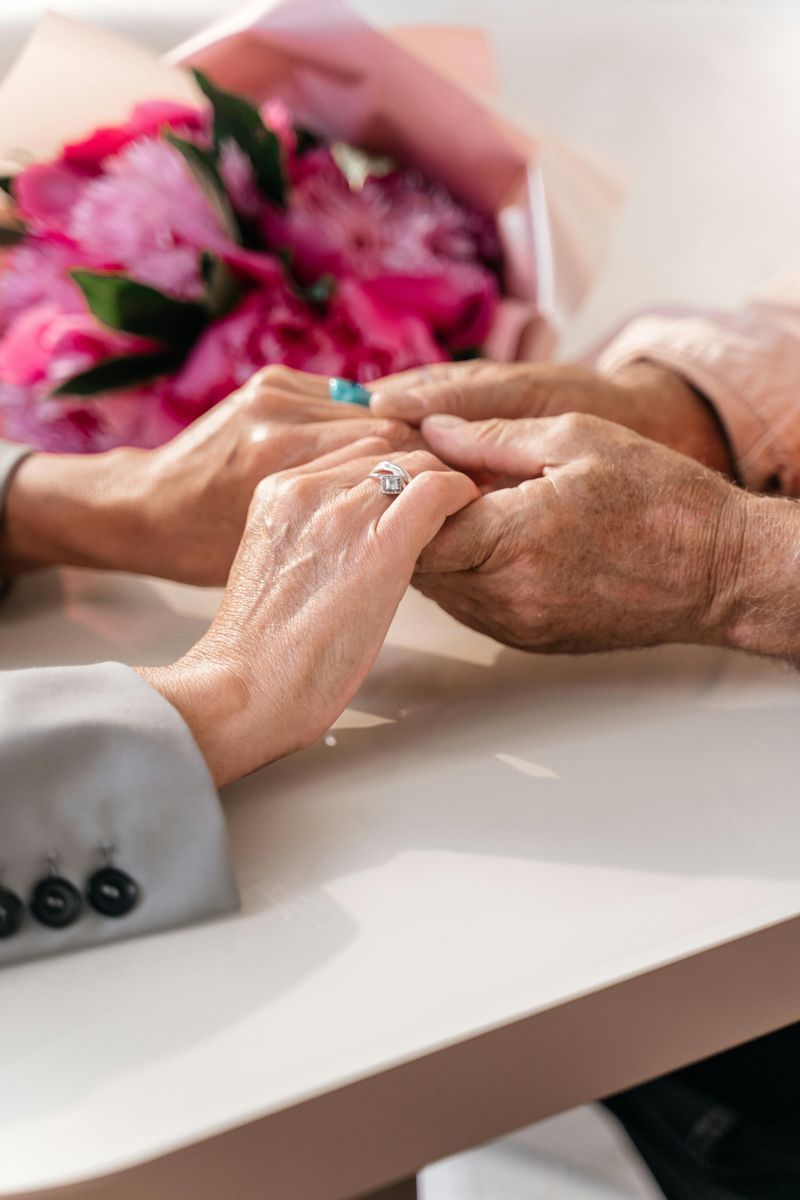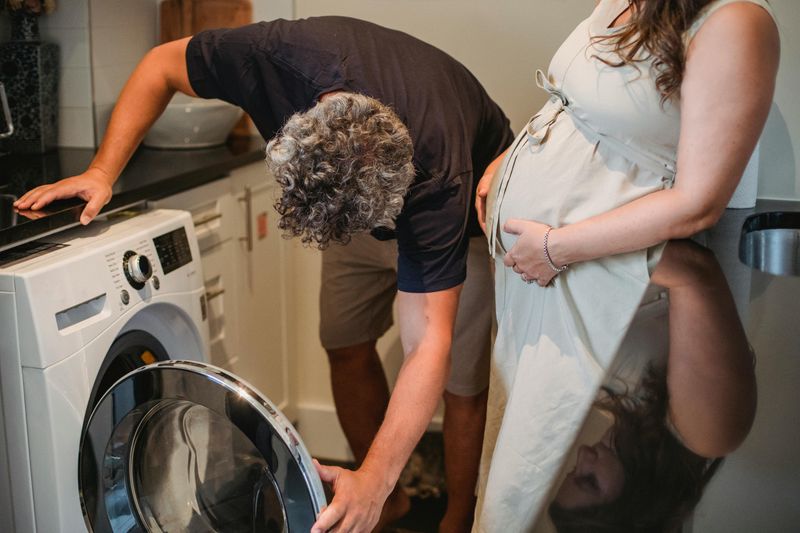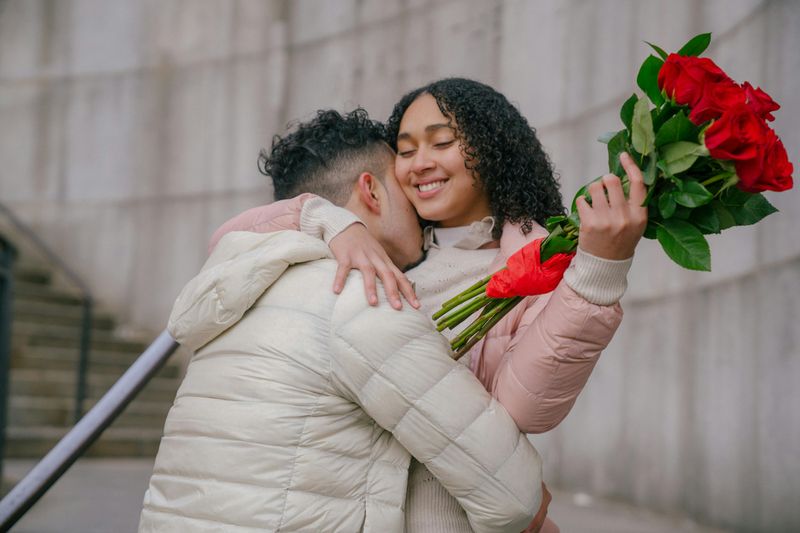Love speaks volumes even in silence. When couples have been together for years, they develop unique ways of expressing affection that don’t require words. These quiet gestures often become the foundation of deep, lasting relationships. The small, wordless moments of connection are sometimes more meaningful than grand declarations of love.
1. Small Daily Gestures
A coffee prepared exactly how they like it waiting on the nightstand before they wake up. The car warmed up on frosty mornings before their commute. A favorite snack appearing in the pantry without request.
These tiny acts might seem insignificant to outsiders, but for long-term couples, they’re powerful love notes written in actions rather than words. Partners notice what brings comfort or joy to their loved ones and quietly incorporate these things into daily life.
Over time, these gestures create a tapestry of care that wraps around both partners, making them feel truly seen and valued in ways grand gestures never could.
2. Comfortable Silence
Remember how awkward silence felt in early dating? That pressure to fill every quiet moment with conversation has long disappeared for established couples. Now they can share space without exchanging a single word, yet feel completely connected.
Reading books side by side on the couch. Driving for miles with just the radio playing. Working on separate projects at the same table. These peaceful shared silences aren’t empty – they’re filled with acceptance and trust.
The ability to be quiet together without discomfort shows a relationship has reached a special level of security where partners can simply exist together, finding comfort in each other’s presence without demanding attention.
3. Physical Touch
A hand resting on a knee during dinner with friends. Fingers gently brushing against a partner’s back while passing in the hallway. Feet finding each other under the covers at night.
These fleeting moments of contact serve as silent reassurance between long-term partners. Physical touch releases oxytocin, often called the ‘bonding hormone,’ creating a biochemical connection that strengthens relationships.
But beyond science, these touches act as a secret language developed over years together. The beauty lies in how automatic these gestures become – reaching for each other’s hand before a stressful situation or leaning slightly closer during conversations, creating invisible threads of connection throughout ordinary days.
4. Shared Routines
Morning coffee rituals where each knows their role without discussion. Evening walks that happen without planning. Sunday morning pancakes that appear like clockwork. Long-term couples create rhythms and routines that become silent expressions of partnership.
These shared habits might seem mundane to outsiders, but they form the backbone of relationship stability. Partners move through these routines like a well-rehearsed dance, anticipating each other’s movements and needs.
The comfort found in these predictable patterns creates a foundation of reliability and trust. When life gets chaotic, these simple routines become anchors – silent reminders that some things remain steady even when everything else changes.
5. Eye Contact
A glance across a crowded room that says “I’m thinking of you.” That knowing look when someone says something ridiculous at a dinner party. The lingering eye contact after a goodbye kiss that whispers “I’ll miss you.”
Long-term couples develop an entire vocabulary through their eyes alone. Research shows sustained eye contact increases feelings of connection and intimacy, but couples don’t need science to confirm what they already know intuitively.
This visual connection becomes especially powerful during important life moments – silently supporting each other during a child’s graduation or sharing private joy at family gatherings, all without saying a word. Their eyes find each other like magnets across any distance.
6. Acts of Service
Taking out the trash without being asked. Handling the chore your partner dislikes most. Washing their car after a long work week. For many couples, love isn’t spoken – it’s demonstrated through actions that make their partner’s life easier.
These acts of service carry special weight because they require noticing what needs to be done and taking initiative. They say “I’m paying attention” and “Your comfort matters to me” without requiring a single word.
Especially meaningful are the tasks that go against natural preferences – the night owl who gets up early to handle morning responsibilities or the tired partner who stays up to fold laundry while the other sleeps. These silent sacrifices speak volumes about commitment.
7. Anticipating Needs
Handing over a sweater before they mention feeling cold. Bringing water to the bedside table when they’re sick without being asked. Ordering their favorite meal when they’ve had a rough day at work.
Long-term couples become experts at reading subtle cues and anticipating needs before they’re expressed. This silent attentiveness demonstrates deep knowledge of a partner’s preferences, habits, and comfort levels.
The magic happens when needs are met so seamlessly that the receiving partner barely notices – like background music that enhances life without demanding attention. This creates an environment where both feel instinctively cared for, building a foundation of security that strengthens the relationship without fanfare.
8. Checking In Without Asking
A gentle squeeze of the hand during a tense family dinner. A knowing glance during a social gathering that asks “Ready to leave?” A subtle touch on the back that means “Are you okay?” Established couples develop their own silent check-in system.
These wordless check-ins create safety nets in social situations, allowing partners to communicate privately in public spaces. They demonstrate ongoing awareness of each other’s comfort and emotional state without interrupting the flow of events.
This silent monitoring system shows remarkable attunement – noticing slight changes in posture, facial expression, or energy that others would miss. It’s relationship radar developed through years of paying attention to each other’s signals and needs.
9. Shared Laughter
That inside joke triggered by a single raised eyebrow. The mutual smirk when hearing a phrase that references a shared memory. The synchronized laughter at the same moment in a movie they’ve both seen before.
Long-term couples develop a unique humor landscape that requires no explanation. They catch references that fly past others and find humor in situations based on years of shared experiences.
Their laughter connects them through an invisible thread of mutual understanding. These moments of spontaneous, shared amusement create bonds that strengthen relationships.
When partners can silently exchange humor across a room with just a glance, they’re demonstrating one of the most intimate forms of wordless communication – the ability to spark joy in each other without explanation.
10. Protective Gestures
A hand automatically reaching out when braking suddenly in the car. Moving to the street side of the sidewalk without discussion. Quietly handling a difficult conversation to shield their partner from stress.
These protective moves happen instinctively in long-term relationships, often without conscious thought. They reveal a deep-seated desire to keep each other safe, both physically and emotionally.
What makes these gestures special is their automatic nature – they’re not performed for recognition or thanks. Like a reflex developed over years together, these small protective actions create an invisible safety net around the relationship, silently communicating “I’m watching out for you” through actions rather than words.
11. Respecting Space
Quietly closing the door when they’re on an important call. Taking the kids out for ice cream when their partner needs downtime. Sensing when to offer comfort and when to provide solitude during difficult moments.
Long-term couples understand that respecting personal space isn’t about distance – it’s about recognizing individual needs. This silent acknowledgment of boundaries shows profound respect for a partner’s autonomy and emotional requirements.
The beauty lies in how these space-giving gestures happen without negotiation or explanation. Partners develop an intuitive understanding of each other’s rhythms and requirements, creating an environment where both can flourish individually while remaining connected. This unspoken respect forms the foundation for lasting intimacy.
12. Thoughtful Surprises
A favorite book that appears on the nightstand without mention. Their car mysteriously filled with gas after a long day. A hidden note discovered in a packed lunch. These unexpected moments of thoughtfulness speak volumes in established relationships.
Unlike grand romantic gestures, these small surprises work their magic precisely because they’re unexpected and unnecessary. They demonstrate continued effort and attention even after the initial courtship phase has passed.
The power lies in the specificity – surprises that reflect intimate knowledge of preferences and desires. Each thoughtful gesture communicates “I’m still paying attention” and “Your happiness matters to me” without requiring words, keeping the relationship fresh even after years together.
13. Supportive Presence
Sitting quietly beside them during disappointment without trying to fix it. Attending an event they find boring simply because it matters to their partner. Being physically present during stressful moments without requiring explanation or conversation.
This silent support creates a powerful foundation in long-term relationships. It acknowledges that sometimes, words fail and presence itself becomes the most profound expression of love and solidarity.
Partners learn when to offer solutions and when simple presence is the greater gift. This wordless support creates safety during vulnerable moments, allowing each person to process emotions authentically while feeling securely connected.
The message sent is clear: “You don’t have to face anything alone, even when words aren’t enough.”













